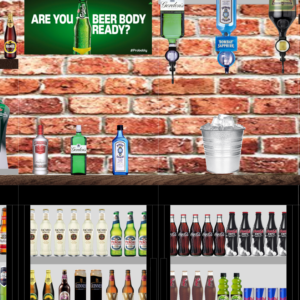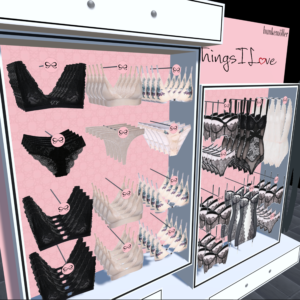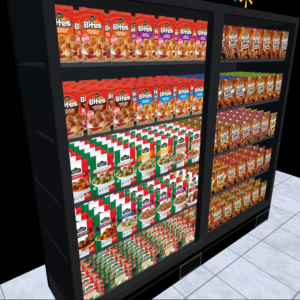Opening a retail store? Feel like your retail space is in need of refreshment? It’s important to consider the many variables involved in order to make your endeavor a success. For any store that wants to make optimal use of their resources, retail space planning plays an integral role. Retailers of all sizes find that planograms and store planning are the best way to get an idea of how the store can be laid out and have a sense of how products will be merchandised throughout the space.
What is a planogram?
A planogram is the visual layout or representation of a range of products displayed within a retail environment. Planograms are essential in retail to optimise space and maximise sales. Optimised planograms in terms of layout, stock and forward share/space allocated to each product will enhance the shopper’s experience when browsing a category.
Planograms are essential for any business that deals with products, space and people. It should be the aim of every retail business to help make sense of the products on shelf both from a retailer’s perspective and most importantly, the shopper’s perspective. Here are some examples how planograms can help various retail and service scenarios:

Bars and Pubs:
Depending on location, size, and products, pubs and bars should merchandise their products in a way that showcases their inventory as well as offers eye appeal to their customers. Visibility of seasonal product on tap, snacks and bottled beverage options need to be seen in order to sell. Using a planogram to analyze space and product can help to optimize all available resources to increase sales.

Apparel:
Apparel brands and retailers use planograms that illustrate the look and brand identity for each product and enable the retail team to focus on presentation. Depending on the retailer, products may be grouped by similar color, item type, material, and/or collection.
 Supermarkets:
Supermarkets:
Analysis of cost, selling price, rate of sales, and other associated data plays a large role in where product sits on a shelf. Products placed at eye level tend to sell the fastest, while products on lower shelves are prime locations for products that appeal to children. Using a planogram can help retailers plan the position of every product in detail based on price, popularity, brand, and effort required to simply place a product in a cart.
The importance of store design and customer flow
Interior retail store layout has two important components: store design and customer flow. Store design covers the use of strategic floor plans and space management, including furniture, displays, fixtures, lighting, and signage. Customer flow is the pattern of shopper behavior and ways that a customer navigates through a store. Although their behavior may seem random to the outsider, retailers understand that there are distinct patterns if you take the time to observe them. Knowing how and when customers are likely to shop can help determine how products should be merchandised. By meeting the customers’ demand and by looking at sales data, planograms can be created that are both visually appealing and are localised to the specific shoppers’ wishes.
Research studies have found that a minimum placement range between 15cm and 30cm of one single product is necessary to achieve an increase in customer attention. In order to keep up with eCommerce, many retailers are investing millions into remodeling their brick and mortar stores.
Planograms enable retailers to assess their overall marketing and merchandising strategy. Retail store layouts have several important components, including the design of the store and customer interaction with the layout. Visual merchandising and space planning using planograms increases visual appeal of products and the store to customers, improves inventory control, streamlines finding and replenishing products for staff, and helps determine how related products should be merchandised near one another.
Planograms for a successful product launch
Planograms are also often used by staff when a new product is being brought out into a store. They help to integrate the new product into the current space in order to optimise sales amongst similar products. Larger retailers put quantities of each product on their shelves and introduce merchandising principles of how to merchandise products to simplify this process.
Which planogram software is the best value?
The use of planograms increases the possibility of a retailer to improve sales and overall shop efficiency across all areas of the workflow. The planogram design process can be frustrating without the right space planning tool. Scorpion Planogram software can make the completion of these tasks more efficient and productive. With Scorpion Planogram, all space planning applications are in one user interface and program. Planogram maintenance is intuitive with Scorpion, and the use of data synchronisation and planogram templates make the planogram design process quick and easy. It is quick and easy to share planograms internally in the company and once everyone realizes the simplicity of making changes to the planograms, planogramming becomes an asset to any business.
Cost reduction can immediately be made by using a planogram software like Scorpion with features such as using days of supply and the pareto curve analysis. By adapting stock to the shopping behaviour of customers, stocks can be reduced and wastage greatly limited, thus reducing costs. Another expense that can be eliminated is that of mock-up centers or software as Scorpion offers professional planogram visuals where changes can easily be made without any additional costs.
Space planning technology improves knowledge and adds value
The primary goal of retail store design is to positively impact customer experience and create value. Time, money and resources are all valuable assets to any business. By applying planogram software such as Scorpion Planogram, businesses can save time, money, and resources that can be used for other operational purposes. Scorpion offers the latest space planning technology that has been optimised to help save time building fixture mock-ups, make product ranging recommendations to optimise stock control, and ease the process of category management procedures and concept design.
